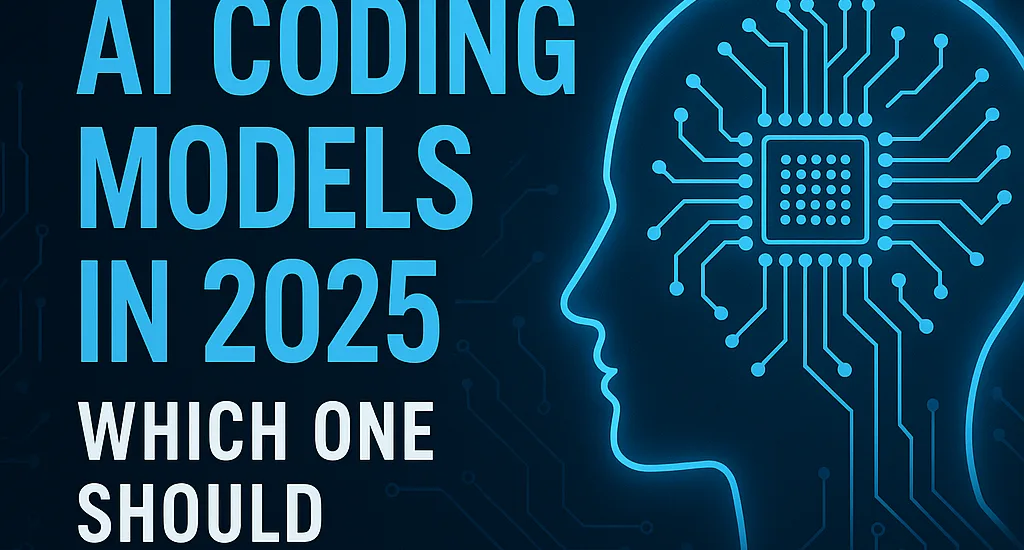The landscape of AI-powered coding has evolved dramatically in 2025, with several groundbreaking models emerging that are specifically designed to revolutionize how developers write, debug, and optimize code. Recent announcements from major AI companies have introduced specialized coding models that outperform their predecessors, offering developers unprecedented capabilities in automated code generation, debugging assistance, and software engineering tasks. This comprehensive analysis examines the most powerful coding AI models available today, comparing their unique strengths and helping you choose the perfect tool for your development needs.
Latest Breakthrough Models in AI Coding
Mistral Devstral: The Open-Source Coding Specialist
Mistral’s newly announced Devstral model represents a significant leap forward in open-source AI coding capabilities1. Released in May 2025, this model was developed specifically for programming tasks in partnership with All Hands AI, setting it apart from general-purpose language models that have been adapted for coding1.
What makes Devstral particularly compelling is its open-source nature under the Apache 2.0 license, allowing unrestricted commercial use1. The model demonstrates superior performance on the SWE-Bench Verified benchmark, outperforming established models like Google’s Gemma 3 27B and DeepSeek’s V31. This benchmark specifically measures coding skills, making Devstral’s performance particularly relevant for developers seeking proven coding capabilities.
Devstral excels at utilizing tools to navigate codebases and modifying multiple files simultaneously, making it ideal for complex software engineering tasks1. The model is designed to work seamlessly with code agent frameworks like OpenHands or SWE-Agent, which establish interfaces between the model and test cases1. Despite its advanced capabilities, Devstral remains lightweight enough to function on a single Nvidia RTX or Mac with 32GB of RAM, making it accessible for local deployment and on-device applications1.
Claude 3.7 Sonnet: Hybrid Reasoning for Advanced Development
Anthropic’s Claude 3.7 Sonnet, announced in February 2025, introduces a revolutionary hybrid reasoning approach to AI coding6. This model represents the first hybrid reasoning model on the market, capable of producing both near-instant responses and extended, step-by-step thinking that becomes visible to users6. The extended thinking capability allows developers to understand the model’s reasoning process, which is particularly valuable for complex coding tasks where transparency is crucial.
Claude 3.7 Sonnet demonstrates particularly strong improvements in coding and front-end web development6. The model’s ability to engage in extended reasoning makes it exceptionally well-suited for debugging complex issues, architectural decisions, and code optimization tasks. Additionally, Anthropic has introduced Claude Code, a command line tool for agentic coding that enables developers to delegate substantial engineering tasks directly from their terminal6.
The model’s pricing structure remains competitive at $3 per million input tokens and $15 per million output tokens, with thinking tokens included in the output pricing6. This pricing model makes it accessible for both individual developers and enterprise teams working on substantial coding projects.
GPT-4o: The Rapid Code Generation Powerhouse
GPT-4o has garnered significant attention in the developer community for its exceptional code generation capabilities5. Developers report remarkable experiences where the model can generate hundreds of lines of functional code with corresponding unit tests in minimal time5. One notable case involved generating 200 lines of functionality code for a game state validation tool plus another 200 lines of unit tests in C#, all working without compilation errors on the first run5.
The model’s strength lies in its ability to understand complex existing codebases and generate compatible extensions or modifications5. This capability transforms development workflows, allowing developers to accomplish what previously required days of work in just hours5. The speed and accuracy of GPT-4o make it particularly valuable for rapid prototyping, MVP development, and handling repetitive coding tasks.
Comprehensive AI Coding Tools and Platforms
Visual Studio Code with GitHub Copilot Integration
The combination of Visual Studio Code and GitHub Copilot remains one of the most widely adopted AI coding solutions in 20252. VS Code provides a free, robust development environment, while GitHub Copilot offers tiered pricing starting with free basics, $4/month for teams, and $21/month for businesses2.
This integration provides AI-powered autocomplete, real-time coding assistance, and context-aware code generation based on natural language prompts2. The tool supports multiple programming languages including Python, JavaScript, Java, and C++, making it versatile for diverse development projects2. The AI-assisted debugging features help developers resolve errors faster, while the context-aware suggestions adapt to individual coding styles and project requirements.
Cursor: The AI-Native Development Environment
Cursor represents a paradigm shift as an AI-native code editor built from the ground up with artificial intelligence at its core2. Unlike traditional editors with AI features added later, Cursor integrates AI throughout the entire development experience2. The platform offers a free tier for basic use and a Pro Plan at $20/month for advanced features2.
The editor provides AI-powered code completion with inline explanations, smart code refactoring for cleaner and optimized code, and an inline AI chat assistant for real-time coding guidance2. This comprehensive approach makes Cursor particularly valuable for developers who want AI assistance integrated throughout their entire workflow rather than as an occasional tool.
Specialized Platforms and Tools
Several specialized platforms offer unique approaches to AI-powered coding. Ninja AI’s Code Generator combines advanced AI systems with intuitive interfaces and built-in code editors3. The platform supports multiple programming languages including Python, JavaScript, Java, C++, C#, Ruby, Swift, PHP, Go, and Rust3. Ninja’s approach includes compound AI systems utilizing multiple LLMs for complex tasks and Deep Research capabilities that can analyze hundreds of internet sources for project-relevant information3.
Tabnine stands out for its deep learning-based approach that adapts to individual coding styles4. The platform prioritizes data privacy, ensuring that user code isn’t used to train their models4. While it takes time for the tool to learn coding styles, this personalization results in highly relevant suggestions tailored to each developer’s preferences.
Comparative Analysis: Choosing the Right Model
Performance and Specialization Comparison
| Model/Tool | Best For | Pricing | Key Strengths | Deployment Options |
|---|---|---|---|---|
| Mistral Devstral | Complex software engineering, multi-file modifications | Free (Apache 2.0) | Open-source, SWE-Bench leader, lightweight | Local deployment, on-device |
| Claude 3.7 Sonnet | Debugging, architectural decisions, front-end development | $3/$15 per million tokens | Hybrid reasoning, transparent thinking | Cloud-based |
| GPT-4o | Rapid prototyping, large code generation | Variable pricing | Speed, accuracy, large output generation | Cloud-based |
| VS Code + Copilot | General development, team collaboration | Free + $4-21/month | Wide adoption, IDE integration | Local/Cloud hybrid |
| Cursor | AI-first development workflow | Free + $20/month Pro | Native AI integration, chat assistance | Cloud-based |
| Tabnine | Personalized coding assistance | $12/month Pro | Privacy-focused, style adaptation | Local/Cloud options |
Use Case Recommendations
For enterprise development teams requiring transparency and control, Mistral Devstral offers the compelling combination of open-source licensing and proven performance on coding benchmarks1. Its ability to work with existing code agent frameworks makes it suitable for integration into established development workflows.
Individual developers and startups seeking rapid development capabilities should consider GPT-4o for its exceptional speed in generating functional code5. The model’s ability to produce working code without compilation errors significantly accelerates development timelines.
Teams prioritizing reasoning and debugging will benefit from Claude 3.7 Sonnet’s hybrid reasoning capabilities6. The extended thinking mode provides valuable insights into complex problem-solving processes, making it ideal for challenging architectural decisions and sophisticated debugging tasks.
Organizations concerned with data privacy should evaluate Tabnine’s privacy-focused approach4. The platform’s commitment to not using user data for model training addresses common enterprise security concerns while still providing personalized coding assistance.
Conclusion
The AI coding landscape in 2025 offers unprecedented variety and capability, with each model serving distinct developer needs and preferences. Mistral Devstral leads in open-source accessibility and specialized coding performance, while Claude 3.7 Sonnet introduces revolutionary reasoning transparency. GPT-4o excels in rapid code generation, and established platforms like GitHub Copilot continue evolving with proven reliability.
The choice between these models ultimately depends on specific requirements: open-source flexibility, reasoning transparency, generation speed, or integration preferences. As these models continue advancing throughout 2025, developers have access to increasingly sophisticated tools that are fundamentally transforming software development workflows. The key to success lies in understanding each model’s strengths and aligning them with project requirements and development philosophies.





